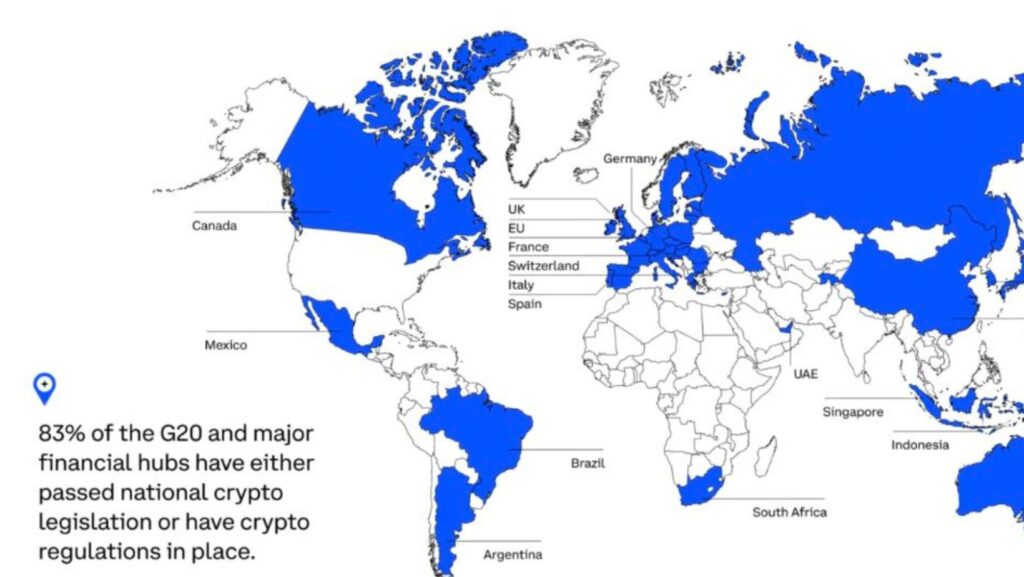Cryptocurrency prices can skyrocket overnight, leaving many wondering what fuels these dramatic shifts. Unlike traditional markets, digital assets operate in a unique ecosystem where various factors interplay to influence their value. From investor sentiment to technological advancements, understanding these dynamics is crucial for anyone looking to navigate the crypto landscape.
Market liquidity and liquidity aggregation also play essential roles in crypto market dynamics. High liquidity ensures smooth transactions and stable prices, while low liquidity can result in price volatility and difficulty in executing trades. Aggregating liquidity from various sources can help stabilize the market by providing a larger pool of assets, facilitating better price discovery and reducing volatility.
Overview Of Crypto Market Dynamics
Crypto market dynamics differ significantly from those of traditional financial markets. Several factors converge to influence the prices of digital assets. First, market demand plays a crucial role in determining cryptocurrency prices. When demand for a specific coin surges, its price often follows. Conversely, low demand can lead to depreciation.
Second, regulatory news impacts market dynamics. Announcements from governments or financial authorities can spark price fluctuations. For example, restrictions or bans can lead to sharp declines, while favorable regulations can boost investor confidence and drive prices up.
Third, social media influence is significant in the crypto space. Tweets, posts, and news from influential figures or large communities can lead to rapid market shifts. A single tweet can sometimes cause substantial price changes, demonstrating the market’s sensitivity to social media trends.
Fourth, institutional investments affect cryptocurrency prices. When large financial institutions invest in digital assets, it often signals market confidence, leading to price increases. Conversely, divestments or withdrawals by these institutions can signal trouble, causing prices to fall.
Lastly, global economic indicators impact the crypto market. Factors like inflation rates, economic stability, and geopolitical events can influence investor behavior. For instance, economic uncertainty can make cryptocurrencies attractive as alternative investments.
Supply And Demand Factors
Supply and demand heavily influence cryptocurrency prices. Limited supply and increasing demand drive digital asset valuations.
Limited Supply And Halving Events
Cryptocurrencies often have a finite supply. Bitcoin, for example, is capped at 21 million coins. As supply nears its limit, scarcity can drive prices up. Halving events further influence supply. Bitcoin experiences halving approximately every four years, cutting in half the reward miners receive. This reduction in new supply, while demand remains constant or increases, tends to boost prices. The last Bitcoin halving in 2020 saw significant price appreciation in subsequent months.
Growing Demand For Cryptocurrencies
Demand for cryptocurrencies has surged due to various factors. Institutional adoption, such as Tesla’s $1.5 billion investment in Bitcoin, signals confidence and stimulates market interest. Increased acceptance from payment processors, online vendors, and even physical stores also boosts demand. Additionally, cryptocurrencies offer a hedge against inflation, attracting investors looking to diversify their portfolios. Investors looking to enter the cryptocurrency market can purchase USDT with PayPal as a convenient way to begin trading with a stable digital asset. As more users adopt digital assets, demand rises, leading to upward price pressure.
Influence Of Macroeconomic Trends
Macroeconomic trends play a crucial role in shaping cryptocurrency prices. By examining inflation, economic policies, and global geopolitics, one can understand their significant impact on digital assets.
Impact Of Inflation And Economic Policies
Inflation and economic policies directly affect cryptocurrency prices. When inflation rates rise, investors seek assets that can preserve value, such as Bitcoin. Cryptocurrencies act as a hedge against inflation due to their decentralized nature and limited supply. Central banks’ monetary policies, like interest rate changes, also drive market dynamics.

An increase in interest rates can lead to reduced liquidity, impacting digital asset prices negatively. Conversely, lower interest rates tend to increase liquidity, potentially driving prices up.
Global Geopolitical Events
Geopolitical events affect crypto markets by influencing investor sentiment and market stability. Events like trade wars, regulatory changes, or geopolitical tensions can create uncertainty. This often leads investors to seek safe-haven assets, including cryptocurrencies. For instance, during periods of geopolitical unrest, Bitcoin and other digital assets often see increased demand. Investors perceive cryptocurrencies as less vulnerable to geopolitical risks compared to traditional assets. Additionally, positive developments in the geopolitical landscape can boost market confidence and drive prices higher.
Technological Innovations
Technological advancements play a crucial role in driving cryptocurrency prices. Innovations in blockchain technology and integration with traditional financial systems significantly impact digital asset valuations.
Blockchain Advancements
Blockchain advancements improve the functionality, security, and scalability of cryptocurrencies. Enhancements like Layer 2 solutions, such as the Lightning Network for Bitcoin, address scalability issues by enabling faster transactions and reducing network congestion. These technological improvements bolster market confidence, often leading to price increases.
Moreover, blockchain innovations like smart contracts and decentralized finance (DeFi) platforms expand the utility of digital assets. Ethereum’s adoption of smart contracts enables various applications, from tokenized assets to decentralized exchanges, driving demand and value. DeFi platforms, which offer financial services without intermediaries, are attracting more users and liquidity, contributing to the overall growth of the cryptocurrency ecosystem. For example, Solana’s high-performance blockchain infrastructure, which supports a growing number of innovative DeFi applications, has played a role in driving demand for its token, contributing to Solana’s price increases.
Integration With Traditional Financial Systems
Integrating cryptocurrencies with traditional financial systems enhances their mainstream acceptance and utility. When digital assets are adopted by payment processors like PayPal or integrated into banking services, their credibility rises, leading to increased demand and price appreciation.
Additionally, partnerships between blockchain firms and financial institutions foster innovations in financial products and services. Institutions like JP Morgan and Goldman Sachs incorporating blockchain for cross-border payments or asset management catalyze market adoption. This integration reduces friction in financial transactions, promotes liquidity aggregation, and drives digital asset prices higher.
Technological innovations in both blockchain and financial integration are pivotal in shaping cryptocurrency market dynamics. By enhancing functionality and broadening acceptance, these innovations stimulate increased demand and potentially elevate market prices.
Market Sentiment And Speculation
Market sentiment and speculation significantly affect cryptocurrency prices. Positive sentiment encourages buying, while negative sentiment can lead to sell-offs.
Role Of Media And Public Perception
Media heavily influences public perception of cryptocurrencies. Positive news prompts buying sprees, driving prices up. Conversely, negative reports can trigger panic selling. Major financial outlets like Reuters and Bloomberg frequently publish pieces impacting investor attitudes. Public perception plays a critical role, with widespread media coverage of bullish trends attracting more participants to the market. Additionally, rumors and misinformation spread rapidly, causing volatility and affecting market sentiment.
Influence Of Social Media And Celebrity Endorsements
Social media platforms, including Twitter and Reddit, propagate information quickly, amplifying market sentiment. Posts from influential figures, such as Elon Musk or Jack Dorsey, can cause significant price movements.

Celebrity endorsements and mentions often lead to spikes in trading volumes. Communities like Reddit’s r/cryptocurrency and Twitter threads fuel speculation, contributing to the market’s volatility. The rapid dissemination of opinions and news on social media can shift investor sentiment in real-time, leading to abrupt price changes.
Regulatory Environment
Regulations significantly impact cryptocurrency prices. The legal landscape can either foster growth or create hurdles in the digital asset market.
Government Policies And Regulations
Government policies play a critical role in shaping cryptocurrency market dynamics. Stringent regulations often lead to reduced market participation, causing digital asset prices to drop. Conversely, favorable policies can boost market confidence, driving prices up. For example, clear guidelines from the U.S. Securities and Exchange Commission (SEC) affect investor sentiment. Additionally, tax policies targeting cryptocurrency transactions influence market behavior; high tax rates can deter trading, while favorable tax conditions encourage it. Countries like Switzerland and Singapore have seen crypto asset prices rise due to their supportive regulatory frameworks.
Legal Acceptance And Clarity
Legal acceptance and clarity around cryptocurrencies enhance market stability. When digital assets receive legal recognition, they gain legitimacy, prompting institutional investments and increasing liquidity aggregation. This boosts prices as more market players engage confidently. Conversely, regulatory ambiguities lead to cautious investor behavior, often resulting in price volatility. For instance, Japan’s clear legal framework for cryptocurrencies has bolstered market participation and liquidity, positively impacting prices. On the other hand, regulatory uncertainties in regions like India have led to market hesitation and price fluctuations.
Conclusion
Understanding the myriad factors driving cryptocurrency prices is crucial for navigating the volatile digital asset market. Market demand regulatory news social media influence institutional investments and global economic indicators all play significant roles. High market liquidity ensures stability while low liquidity can lead to volatility.
Technological innovations and the integration of cryptocurrencies with traditional financial systems enhance their mainstream acceptance. Regulatory environments also critically shape market dynamics with supportive policies fostering growth and stringent regulations creating hurdles. By grasping these complexities individuals can better position themselves to capitalize on price fluctuations in the ever-evolving cryptocurrency landscape.

